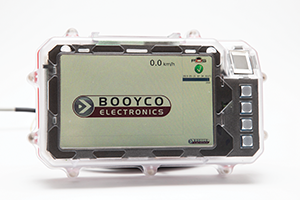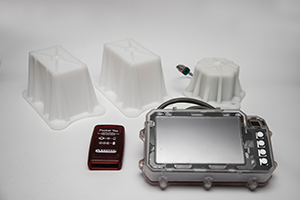
Risk assessments by surface mines are a vital part of operating trackless mining machines (TMMs) safely, and are also required by the Mine Health and Safety Act. “It is therefore significant that we see mines continuously conducting risk assessments on their mobile vehicles and traffic management systems,” says Anton Lourens, CEO of Booyco Electronics, a leading South African proximity detection system (PDS) and collision prevention system (CPS) developer. “These risk evaluations are essential in identifying appropriate risk mitigation responses and technology for each site.”
From his extensive industry experience, Lourens says that surface mines have largely implemented Level 7 PDS and CPS systems, which can warn of possible collisions. They have also embraced Level 8 systems, which can identify and advise on corrective actions. Further testing is being conducted on Level 9 systems, which come with a controlled ‘slow-down and stop’ engineering control intervention.

“The groundwork for this progress has been laid by years of collaboration between the Minerals Council South Africa, mining companies, PDS suppliers and original equipment manufacturers (OEMs),” he says. “This process has allowed the available technologies to be carefully reviewed, with the necessary recommendations being made to the regulator, the Department of Mineral Resources and Energy.”
Industry has also made significant headway in the testing of PDS technology, he says. Simulation testing has been conducted by the Vehicles Dynamic Group at the University of Pretoria, in a process developed by the Minerals Council. This testing is able to demonstrate the capabilities of PDS solutions so that these can be submitted to the stakeholders.

Booyco Electronics has conducted multiple tests as part of continuously improving the performance of its systems. This has allowed the company to progress to single and multiple machine tests on mine sites. The tests are ongoing at some surface mines, with positive results.
Another important step forward has been the integration of these CPS systems with OEM equipment, says Lourens. “Industry recently adopted the ISO 21815-2 (2021) standard, which deals specifically with how a CPS solution should integrate with OEM offerings. This allowed for a common interface between all CPS suppliers and the different OEMs.”
As mines conduct their risk assessments in preparation for applying PDS, he points out that the risk of both vehicle-to-vehicle and vehicle-to-pedestrian collisions should be fully considered. It would appear, he notes, that many surface operations place more focus on using PDS to mitigate vehicle-to-vehicle risk. This may be due to mines applying mitigation strategies such as traffic management, fixed barriers or pedestrian walkways to address vehicle-to-pedestrian risk. “By creating a separation of people from moving machinery, part of the risk can certainly be mitigated,” he explains. “However, with the development of our systems from Level 7 to Level 9, today’s CPS offerings make them a more comprehensive solution.”
To ensure that mines around the world can make the most of CPS solutions, Booyco Electronics collaborates with a number of system integrators in various regions. Lourens points out that rapid technological advancement within the mining sector makes it difficult for mines to develop and retain specialised skillsets in CPS and related technologies. These system integrators help mines to effectively apply CPS, bridging the gaps between different areas of expertise to promote safety and efficiency.
“There has been a great deal of work on PDS and CPS going on in the background in recent years, paving the way for mines to install the optimal solutions,” Lourens says. “This is undoubtedly achieving ongoing progress towards the industry’s goal of zero harm.”
© Technews Publishing (Pty) Ltd | All Rights Reserved